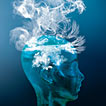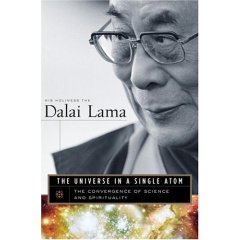 Stigmatics are people in whom the stigmata, the wounds inflicted on Jesus when he was crucified, are reproduced. Since the phenomenon first appeared in the Middle Ages, about 500 stigmatics have been reported.
Stigmatics are people in whom the stigmata, the wounds inflicted on Jesus when he was crucified, are reproduced. Since the phenomenon first appeared in the Middle Ages, about 500 stigmatics have been reported.
What explains stigmatism? Is it Jesus reminding us through His messengers of the pain He suffered as He redeemed mankind? Is it a biological process tied to religious mentational activity—the biotheological phenomenon par excellence ? Or is it simply fraud?
We know that emotions can cause skin eruptions. The medical term for this is psychogenic purpuras, bruising and bleeding from the skin from emotional stress. However, these look like bruises, or spots—not wounds. And the bleeding is subdural—under the skin.
There are substantial grounds for doubting supernatural explanations, besides the fact that some stigmatics themselves admitted they were frauds (such as Magdalena de la Cruz, 1487-1560). There is no video or other objective, scientific account of a stigmatic episode. It seems unusual that stigmatism would have emerged in the 1200s, right when there was an emphasis on the crucifixion, and then largely died out over the last few hundred years. Furthermore, stigmata appear in people’s palms, whereas it now seems likely that the actual wound was in Jesus’ wrist. Virtually all stigmatics are Roman Catholic.
Of course, there are reported aspects to stigmata that do not and probably could not have a scientific explanation, including the fact that they heal instantly, have no odor (or sometimes smell like perfume), bleed only on holy days , and even have a blood type different from the sufferer. If we want to adopt a non-supernatural explanation, we simply have to reject these reports as being pious falsehoods, as we would also reject reports of crying statues of the Virgin Mary.
What we do know is that self-mutilation and flagellation are associated with a variety of psychological disorders which in turn may involve religious manifestations. Cutting has been reported to be the most popular type of self-mutilation. Such disorders have been associated with eating disorders—which also appear in religious contexts, where they are sometimes hailed as miracles allowing saints to survive with no food intake. Both psychopathologies are much more common in females than males, which foots with the fact that 90% of known stigmatics have been female.
There are also reports of unusual mental activity during stigmatic episodes. Some stigmatics reportedly speak to visions of Christ and angels during their trials, and smell strange scents. Many female stigmatics were reported to be “ecstatics”—which apparently means they were in dissociative or schizoid episodes some or all of the time. Today, most of these girls would be on high doses of antipsychotics drugs.
The work of Ross and McKay on adolescent female self-mutilators, who carved themselves with words, letters, and symbols, is reminiscent of variant stigmata involving the names of Jesus and Mary appearing on the body. (St. Francis, an early stigmatic, also had unusual wounds: the skin formation on his palms is said to have actually replicated the shape of the head of the nail on the palm side and, on the reverse side, that of the shaft.)
Stepping back, the relationship between the corporeal and the divine is one of the most complex and profound in our psychosocial spaces. The physical body is our vehicle for experiencing the ultimate, and its gift to us. It is not surprising, that we would find intriguing phenomena at this boundary, or that world religions mark and celebrate it with ceremonies and rituals involving the body, including flagellation—not to mention circumcision.
Fakir Musafar is an artist who is exploring this realm in a non-religious context, the founder of the so-called Modern Primitive Movement, attempting to show that “deviant” self-mutilation is actually on the same spectrum as something as mundane as, say, nose-piercing. According to Musafar, “body play [as he calls it] offers a method for achieving spiritual grace, an enhanced state of awareness, and a communion with some form of higher power,” and “rituals involving self-mutilation practiced by other societies have many beneficial effects to offer those who approach the practice of body play with awareness and respect.”
Musafar says:
…we are doing more than just pushing steel needles through flesh. Something is happening in the emotional and psychic world of both the piercer and the piercee. It’s more than hanging rings there just for looks. In many cases, some of the people we pierce actually experience some kind of transformation. A self initiation. And these changes mean magic…as the people who have done this for thousands of years have discovered, it can be transmuted into ecstasy, bliss and other states of grace.
But most people would still distinguish esthetic body modifications from pathological self-mutilation, especially the type where significant damage is done to the body. The majority of such patients suffer from a psychotic disorder, and have their own “reasons” for engaging in the behavior, according to A. R. Favazza, who also notes that “the most common reasons provided by patients have historically been associated with religion, demonic influences, guilt over sexual thoughts and activities, or heavenly commands.”
Ian Wilson is the author of The bleeding mind: An investigation into the mysterious phenomenon of stigmata. He believes that stigmata are a manifestation of undiscovered abilities of the mind to influence the very shape and functioning of the human body, related to the ability to heal warts with your mind (or increase your breast size). According to a review on amazon.com, Wilson thinks the “phenomenon is a psychological one, with a pathology related closely to multiple personality disorder. Stress and poverty in early life are a common thread running through the lives of many stigmatists. Nearly all suffered some sort of personal catastrophe before the onset of the stigmata, and nearly all had a predisposition to trance states and other altered modes of consciousness. Aparently stigmatists identify so closely with the life of Christ and visualize Him so clearly that some undiscovered physiological mechanism imposes Christ’s marks of suffering on the body of the stigmatist.”
But undiscovered physiological mechanisms don’t have much explanatory power, do they. Although Numenware tries to maintain a studiously objective stance on such issues, my hypothesis is that stigmata are cases of self-multilation as part of psychotic states with religious fixations, and that the reports of unique bleeding or healing patterns are simply pious falsehoods. Unfortunately, with the last known stigmatic, Padre Pio (the newly sainted Italian priest) having died in 1968, any experimental design to validate this hypothesis will be limited to studying historical accounts.
Links:
Skeptic’s Dictionary
Catholic Encyclopedia
Wikipedia
 I am pleased to announce that the Open Directory Project has added a new category for Neurotheology, which after due deliberation was set up as a subcategory of Psychology and Religion under the Psychology tree.
I am pleased to announce that the Open Directory Project has added a new category for Neurotheology, which after due deliberation was set up as a subcategory of Psychology and Religion under the Psychology tree.
 The late Pope John Paul II, while clearly
The late Pope John Paul II, while clearly  Everyone’s talking about
Everyone’s talking about  Transliteration refers to conversion between phonetic alphabets. In Japanese I write ã?¯ã?ª, and I can transliterate this into the Roman alphabet as hana. In English I write cherry, and I can transliterate this into the Japanese katakana syllabary as ãƒ?ェリー.
Transliteration refers to conversion between phonetic alphabets. In Japanese I write ã?¯ã?ª, and I can transliterate this into the Roman alphabet as hana. In English I write cherry, and I can transliterate this into the Japanese katakana syllabary as ãƒ?ェリー. I must be getting cranky. I’ll pick up a book and find myself arguing with the author right from the first page, sometimes even the first sentence. That’s what happened with
I must be getting cranky. I’ll pick up a book and find myself arguing with the author right from the first page, sometimes even the first sentence. That’s what happened with  Stigmatics are people in whom the stigmata, the wounds inflicted on Jesus when he was crucified, are reproduced. Since the phenomenon first appeared in the Middle Ages, about 500 stigmatics have been reported.
Stigmatics are people in whom the stigmata, the wounds inflicted on Jesus when he was crucified, are reproduced. Since the phenomenon first appeared in the Middle Ages, about 500 stigmatics have been reported.
 Convenience stores—shortened to “conbini” in Japanese—are ubiquitous in the Land of the Rising Sun. FamilyMart (
Convenience stores—shortened to “conbini” in Japanese—are ubiquitous in the Land of the Rising Sun. FamilyMart (